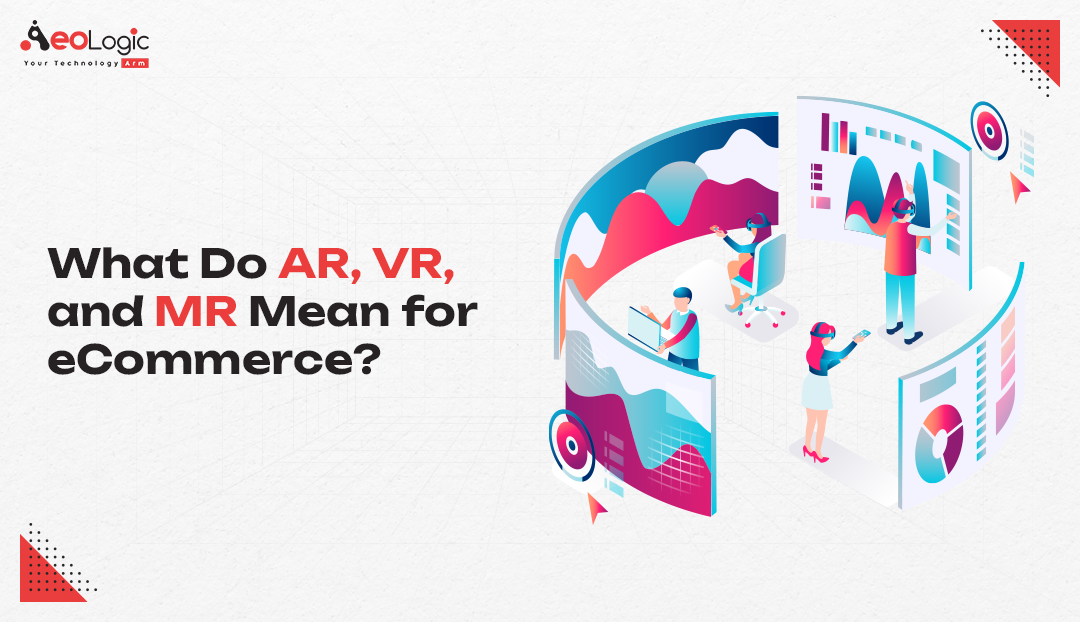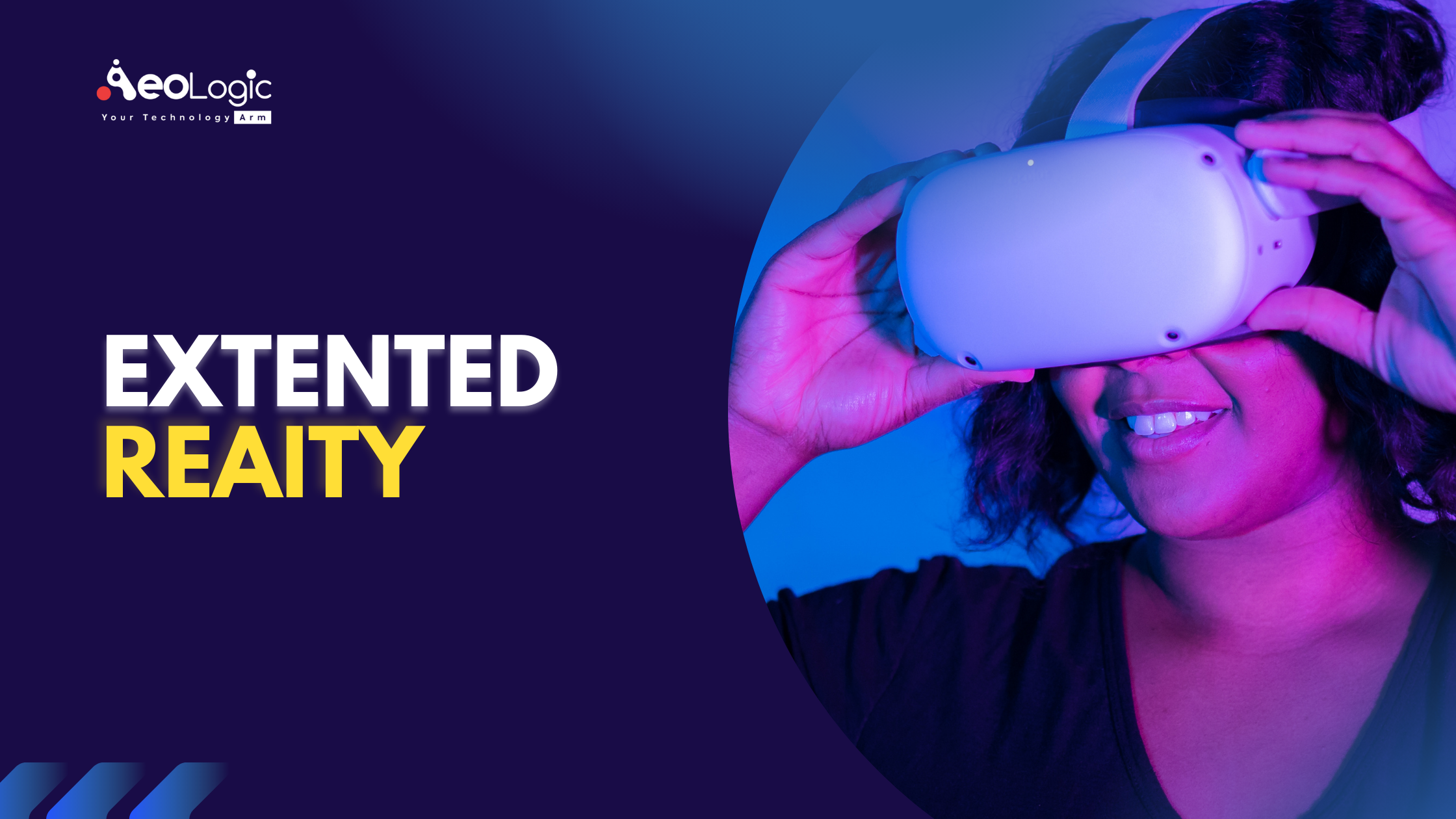“Extended reality” is a broad term that includes augmented reality, virtual reality, and other immersive technologies. Extended reality (XR) gives people a chance to try it before they buy it. with the help of 3D visualizations, virtual trials, and demos. These technologies were not born yesterday. Instead, they have been around longer than even iPhones or social media. Now, these technologies are being used in a wide range of fields. With eCommerce being one of them, it’s clear that there will be a big change. These technologies are changing the way companies work and market their brands. They are trying to cause a revolution in the eCommerce industry. But before we talk about how extended reality is redefining the eCommerce experience, let’s talk about what immersive technologies are and how they work.
What Is Extended Reality Technology?
The extended reality, or “XR,” is a broad term that includes VR, AR, and MR. All XR tech changes the way a person talks to a computer screen, either by
- Making you feel like you’re in a virtual world (VR).
- Adds to the user’s surroundings or makes them better (AR),
- Either of those (MR).
Today, the value of more purchases depends on how well technology can show customers the most important parts of a product. Extended reality can make customers feel more secure when buying things through more detailed product information. The ability to customize a unique product design, or through immersive brand storytelling.
Successful shopping experiences today tend to come from stores with sets of products that are both high-quality and highly customizable. Extended reality technology can help brands rethink how their customers shop, whether they do it online or in a store.
Also Read: Top AR & VR Trends to Transform E-commerce in 2022
What Do AR, VR, and MR Mean for eCommerce?

Cart abandonment will still be a big problem for online stores in 2021. This is because companies can’t persuade buyers to move on to the next step, which is to pay for and finish their order. But new immersive technologies like augmented reality (AR), virtual reality (VR), and mixed reality (MR) can attract users, keep them interested, and convince them to buy.
Since a lot of money is being spent to bring extended reality to eCommerce, these technologies will change online shopping in ways that are hard to imagine in the coming years.
Augmented Reality (AR) in eCommerce
Augmented reality allows users to preview things from home by touching a mobile device or web browser. AR helps buyers browse products and choose the right one the first time. With augmented reality, shoppers may examine a product’s size, color, and fit without visiting a store. Alibaba, Amazon, Shopify, Flipkart, and others are acquiring and deploying augmented reality. In 2018, Alibaba began offering VR and AR customer support for e-commerce.
Also Read: How To CRM Help the Retail & Distribution Industry Improve Sales, Processes, and Reporting?
Virtual Reality (VR) in eCommerce
Virtual reality is a 3D projection that immerses you in the scenario. VR headsets let users see and hear the virtual world. VR gloves with sensors let you “touch” virtual objects. It allows you to explore an environment as if you were there. Ecommerce brands expect to use VR to accelerate growth and convert more people into customers.
VR combines two worlds for an engaging shopping experience. Combining online and offline purchasing increases the customer experience. You can still shop from home and get lightning-fast delivery. With VR, shoppers won’t miss the best parts of shopping in-store. like browsing with friends or trying on clothing before buying.
Also Read: How VR and AR Boost Customer Experience in Retail
Mixed Reality (MR) in eCommerce
Mixed reality combines physical and digital worlds to enable natural 3D human, computer, and environmental interactions. This new reality relies on computer vision, graphical processing, display technologies, input methods, and cloud computing.
Mixed reality will replace mainframes, PCs, and smartphones. Mixed reality is popular with consumers and businesses. It frees us from screen-bound experiences by enabling instinctive data exchanges in our homes and with our friends. Hundreds of millions of people have encountered mixed reality on mobile devices. Social media’s most famous mixed reality option is mobile AR. People may not understand that Instagram AR filters are MR experiences. Windows Mixed Reality adds holographic representations of people, high-fidelity 3D models, and the actual world to these user experiences.
The Future of Extended Reality (XR)
XR will have a big impact on your life in the next couple of years. You’ll hear it in sports (like when someone looks at your golf game and gives you tips) and in healthcare (showing your path through the hospital to the X-ray department with blinking arrows). Virtual field trips will help young people learn in new and exciting ways. You’ll even be able to find what you want in brick-and-mortar stores in the future with the help of AR maps. XR is already making an appearance in various industries, including manufacturing, retail, human resources, and gaming.
Also Read: Using RFID Technology for Simplification of Retail Processes
Extended Reality Redefined the Concept
Easy and Fast
Online shopping is growing more popular due to e-commerce’s convenience and efficiency. Retailers and customers spend less time browsing for a product and making payments. Immersive technology allows for the quick completion of many tasks. Virtual reality technology allows eCommerce retailers to establish virtual showrooms and stores.
Branding
Extended reality can help a company’s brand image reach a wider audience by allowing new strategies. Many companies are using virtual worlds to engage customers.
Real-world simulation
The immersive experience is the greatest benefit of extended reality for the eCommerce industry. Extended reality has made it possible for eCommerce companies to provide users with real-life interfaces. People can easily access all of the features and capabilities supplied by VR. Because of this, more customers would enter the marketing funnel, which would result in more conversions.
Also Read: 5 AI Trends that Are Changing the Face of Retail
Conclusion
Extended Reality is one of a growing number of technologies that enable eCommerce to recreate the brick-and-mortar experience online. With better alternatives like Google Cardboard, which can turn smartphones into headsets, The price of high-end devices like the Oculus Rift is going down over time. So, we can expect to see full XR start to change the way eCommerce works more in the next few years. Will you be ready to use XR as part of your marketing plan, or will you be left behind? Connect with Aeologic Technology to learn more about Extended Reality.
Hopefully, this blog helped you and gave you a better idea of how extended reality is redefining the ecommerce experience.










